When furniture star Minjae Kim met designers Garcé & Dimofski
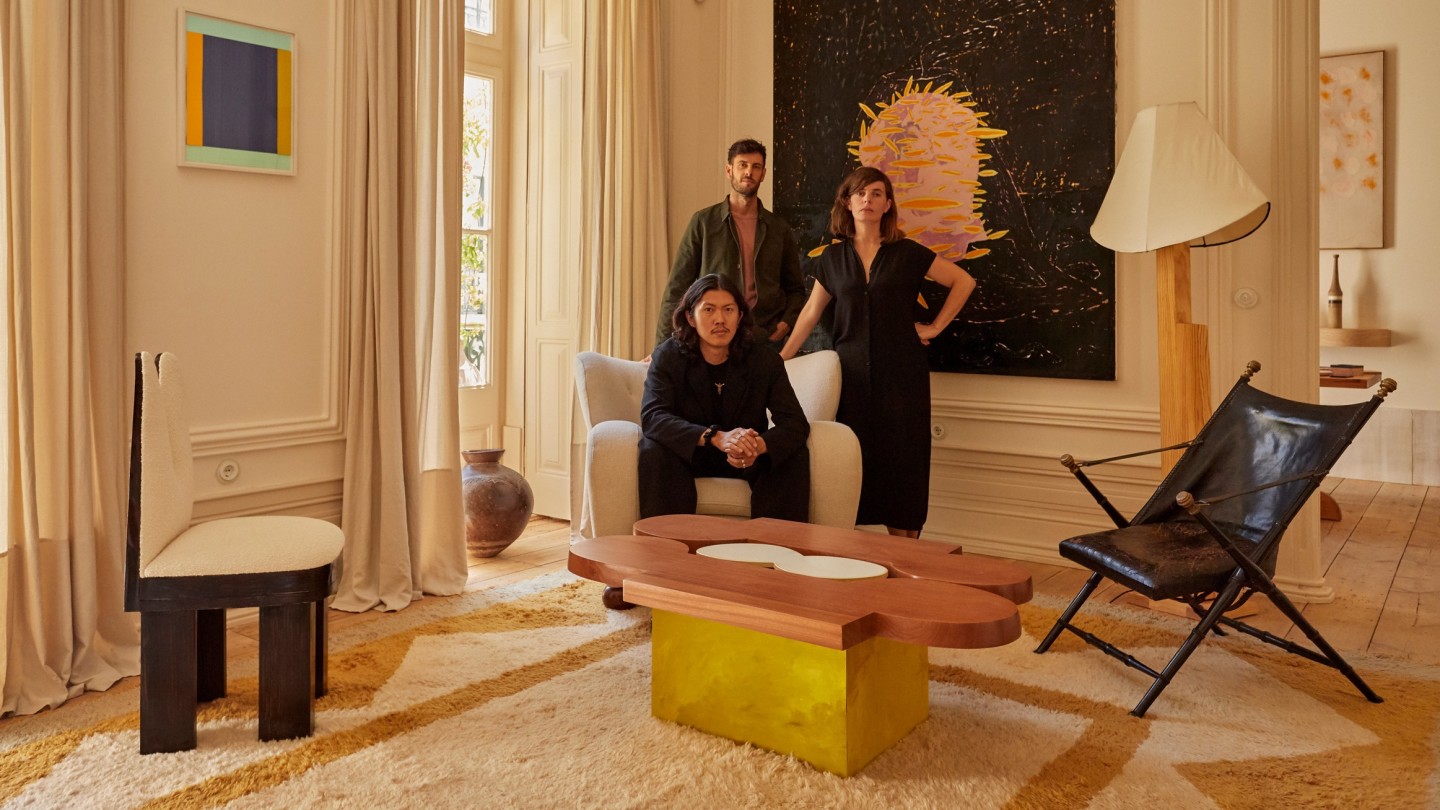
Roula Khalaf, Editor of the FT, selects her favourite stories in this weekly newsletter.
Behind a bright turquoise façade in Arroios, Lisbon, three designers are putting the finishing touches to a new collection of furniture. The 19th-century townhouse, built in the classical Pombaline style with arched doorways, scrolling ironwork and all-over azulejos (Portugal’s famous, florid tiles), is the home of French designer-duo Olivier Garcé and Clio Dimofski. Their houseguest is Minjae Kim, the Seoul-born, New York-based creative with whom they have been collaborating for the past three years.
“Last time I was here, their place was in construction, but now the apartment is amazing,” says Kim. The space is also a gallery for the couple’s burgeoning multidisciplinary studio, Garcé & Dimofski, which is part interior design firm, part purveyor of design furniture. “It’s much more exciting to produce work specific to this site than putting it in a white cube.”
At this new HQ, soaring ceilings and elegant mouldings are combined with stripped wooden floors, off-white walls and dynamic accents. It’s a classical but cool backdrop for “the interesting mix of contemporary design, local craftsmanship and vintage pieces: some French, some Nordic”, says Garcé. The Swedish Grace period – the country’s elegant and romantic take on 1920s neoclassicism – is a particular point of interest, as is the “primitive modernism” of Swedish architect Axel Einar Hjorth. New pieces by their growing stable of collaborators include those by Kim, Parisian multi-hyphenate Garance Vallée and London-based Charlotte Taylor.
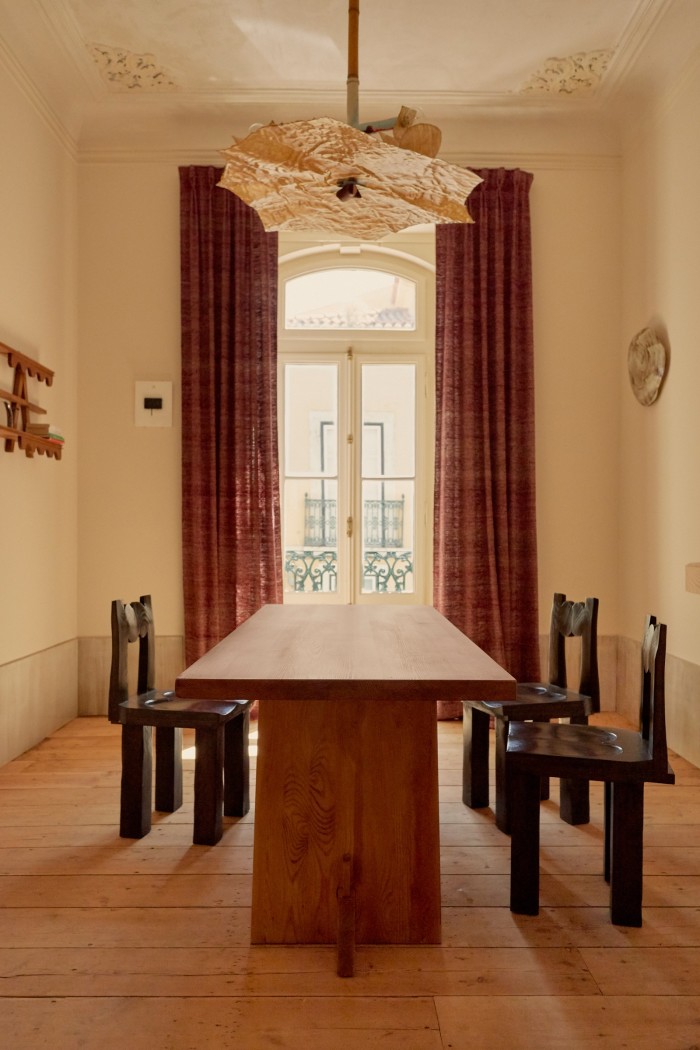
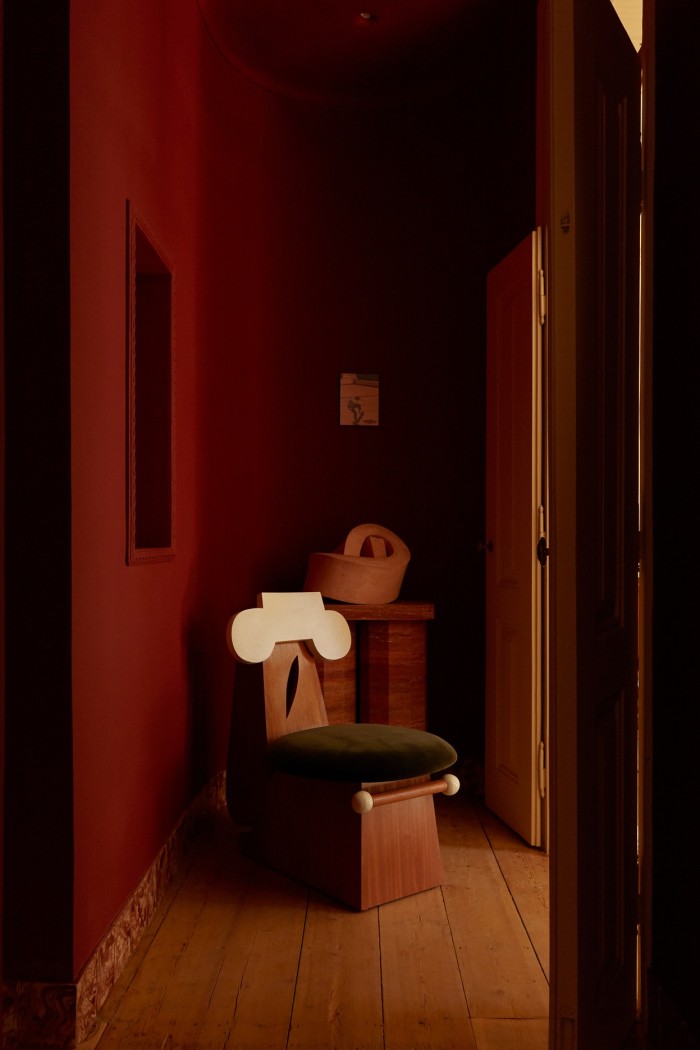
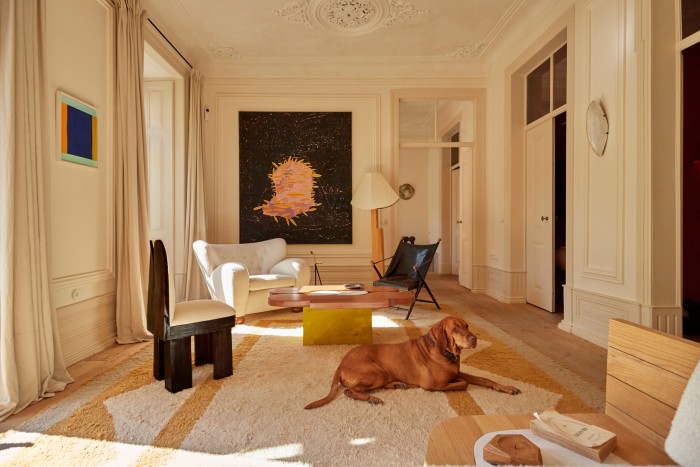
Garcé and Dimofski’s own work ranges from the softly angled Helios Sofa and curvy Mimi Coffee Table (both in oak or chestnut wood upon sculptural ceramic bases), to the ceramic Almond Sconces, handmade and glazed in Portugal. “There’s a visual intensity to their interior style; severity is not the right word… but it’s really well carried through,” says Kim, who describes his furniture as “simple, quirky, imperfect, incohesive, impractical, irrational and often emotional”, and is best-known for the chunkily hand-carved chairs that he began making in his backyard in 2020.
Kim studied architecture at Columbia University and worked at Studio Giancarlo Valle before forging his own path. In the past two years he has notched up solo shows from LA to Miami. During New York Design Week 2022, Matter gallery paired Kim’s new furniture designs with paintings by his mother, MyoungAe Lee.
But the first outing for Kim’s furniture was with Garcé & Dimofski. “We did this thing in our apartment in New York,” says Dimofski of the 2021 project that turned their one-bedroom West Village home into a design showcase. Kim’s contributions included the Oyster Lamp, a shell-like plaster form atop a lacquered pine base, which was propped upon a mantelpiece; and the Lola Chair, its fibreglass back resembling two rabbit’s ears, shown in front of a vintage Indian phulkari rug. “We like to be rigorous in how we display the furniture, but at the same time we have an eclecticism that makes everything a bit different,” says Garcé.
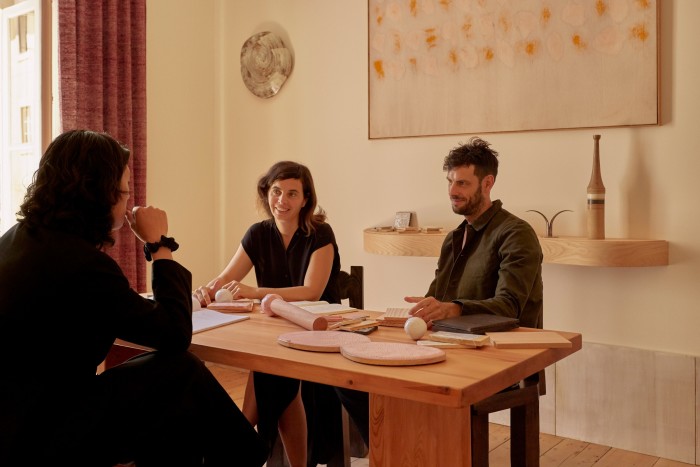
Garcé and Dimofski met when they were studying interior design in Paris and moved to Lisbon with their young daughter in 2021. The duo’s first creative step in the city was an exhibition in the historical Graça Convent, their pared-back contemporary designs surrounded by ornate wall panels and patterned marble floors. They’ve since completed a number of residential interior projects in Portugal.
“Portugal is a country where things are very interesting for entrepreneurs,” says Garcé, whose mother is Portuguese, and whose summer holidays growing up were spent with family near Porto. “The creative scene is evolving super-fast because so many people are moving here.” A key motivation for their own move was to incorporate Portuguese craftsmanship into their practice. “We have ceramicists, woodworkers, ironworkers,” says Garcé. “And we want to showcase these local skills, as well as translate a cultural identity, in the same way that Minjae is doing with Korean culture.”
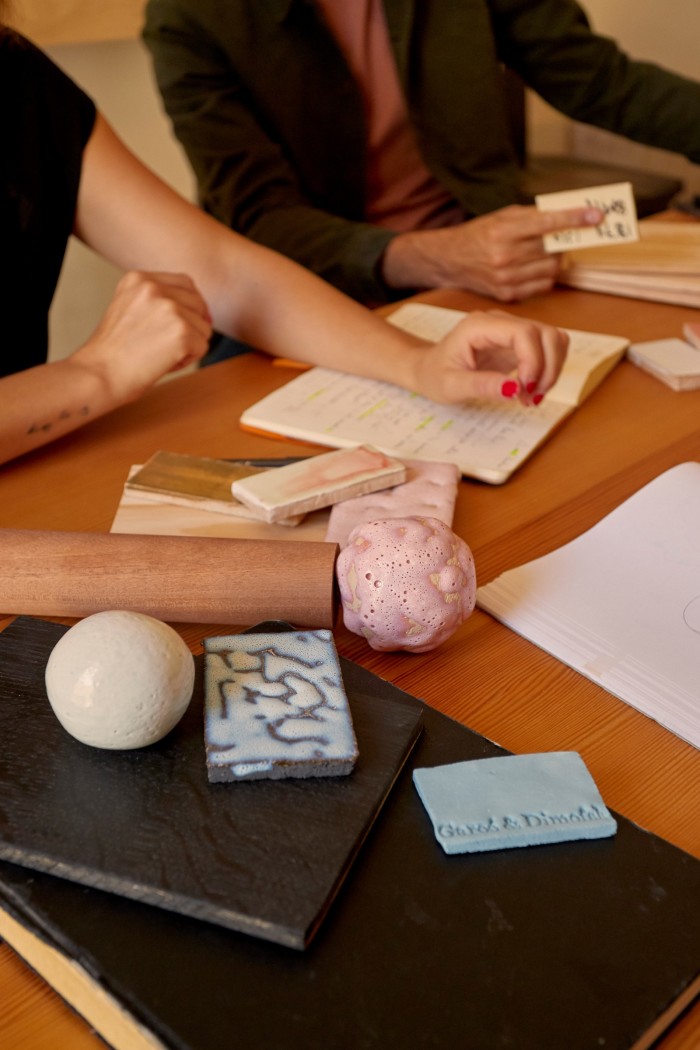
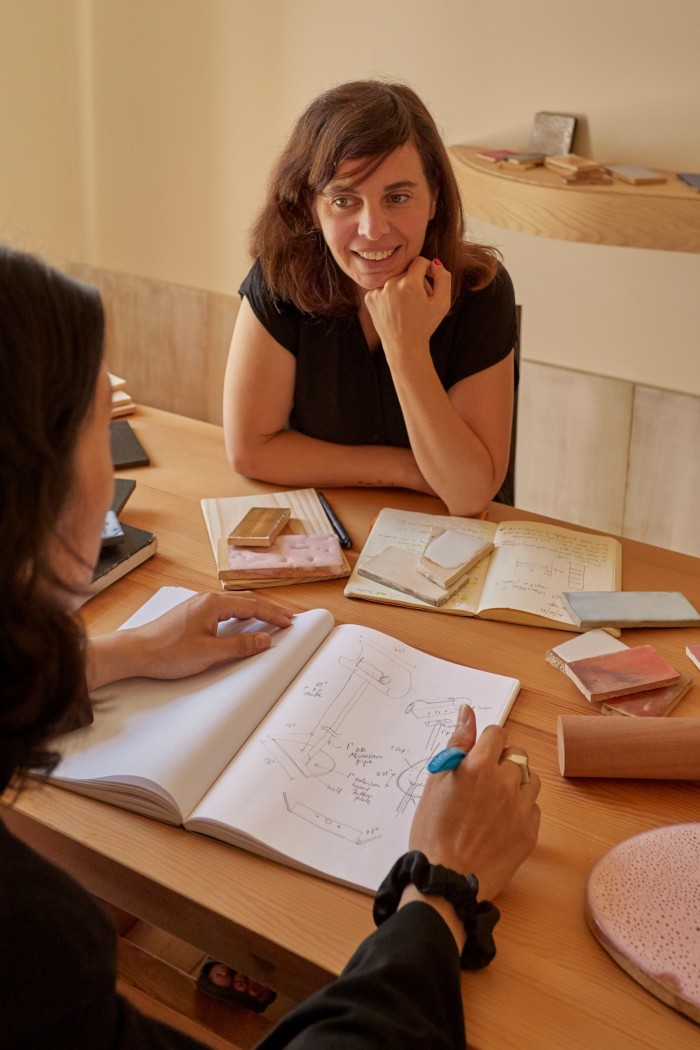
Kim’s new collection for Garcé & Dimofski also incorporates Portuguese craftsmanship. There’s a newly refined elegance to the pieces, which Kim describes as “pretty complicated objects that still capture the sentimental aspects of the designs”. Created in two workshops near Porto, the Ionic coffee table and armchair, for instance, both combine sinuous, scalloped shapes in hand-carved sapele wood with playful ceramic elements and blocks of colour. “The pieces were 70 per cent done, and then I was able to work with the craftsmen here and finish them in person,” says Kim of the process. “We’d all get lunch together and this kind of personal relationship makes a huge difference to me, and the final outcome.”
Broader influences from Kim’s visits to Portugal are also feeding back into his designs. “I’ve been taking a lot of photos of the architecture – simple façades, lots of walls and windows, metalwork, and all the tiles,” he says. “It’s visually very tasty. Colour is always big here.”
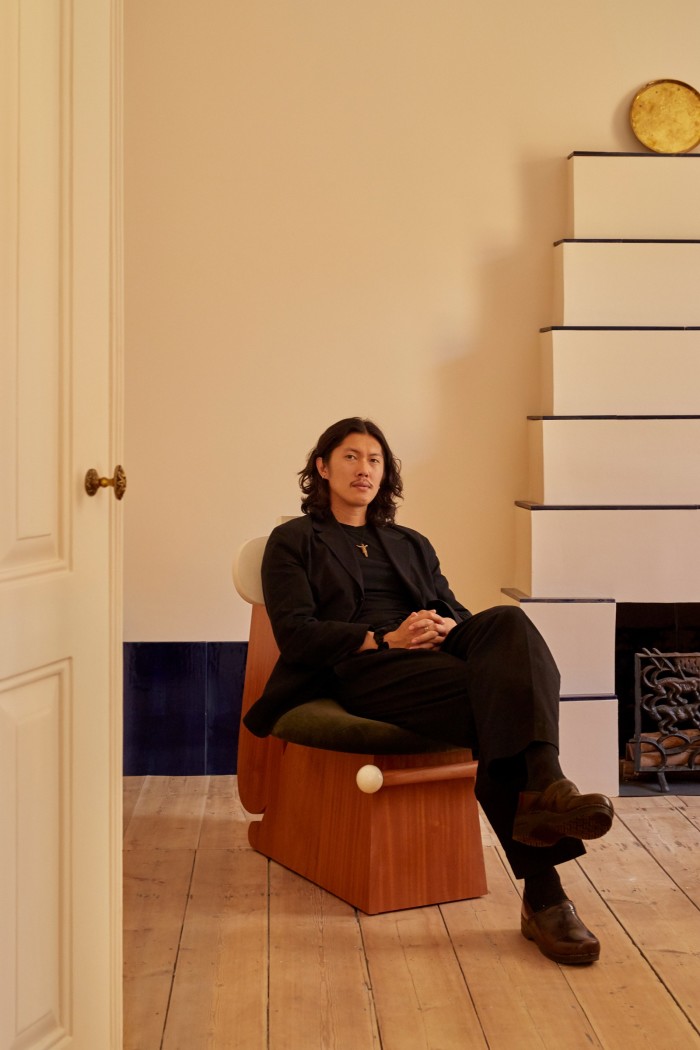
Their collaborative process is “always a discussion – about work, but also friendship”, adds Dimofski. The starting point is to create pieces for Garcé and Dimofski’s home. “So when we needed a light in this room,” says Dimofski, pointing to the ceiling over the dining table, “we asked Minjae if he wanted to make one. If it’s not sold right now, it’s here, and it’s used.”
As to whether Kim is tempted to join the influx of creatives in Lisbon, “it’s now an ongoing joke”, he laughs. “I’ve been in New York nine years now and sometimes it feels a bit too… expensive, let’s just say. Every time we see a building here with a for sale sign, I start daydreaming that it could be my next studio.”
Comments